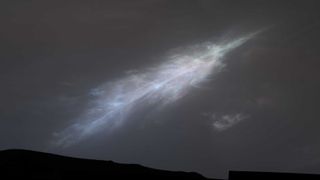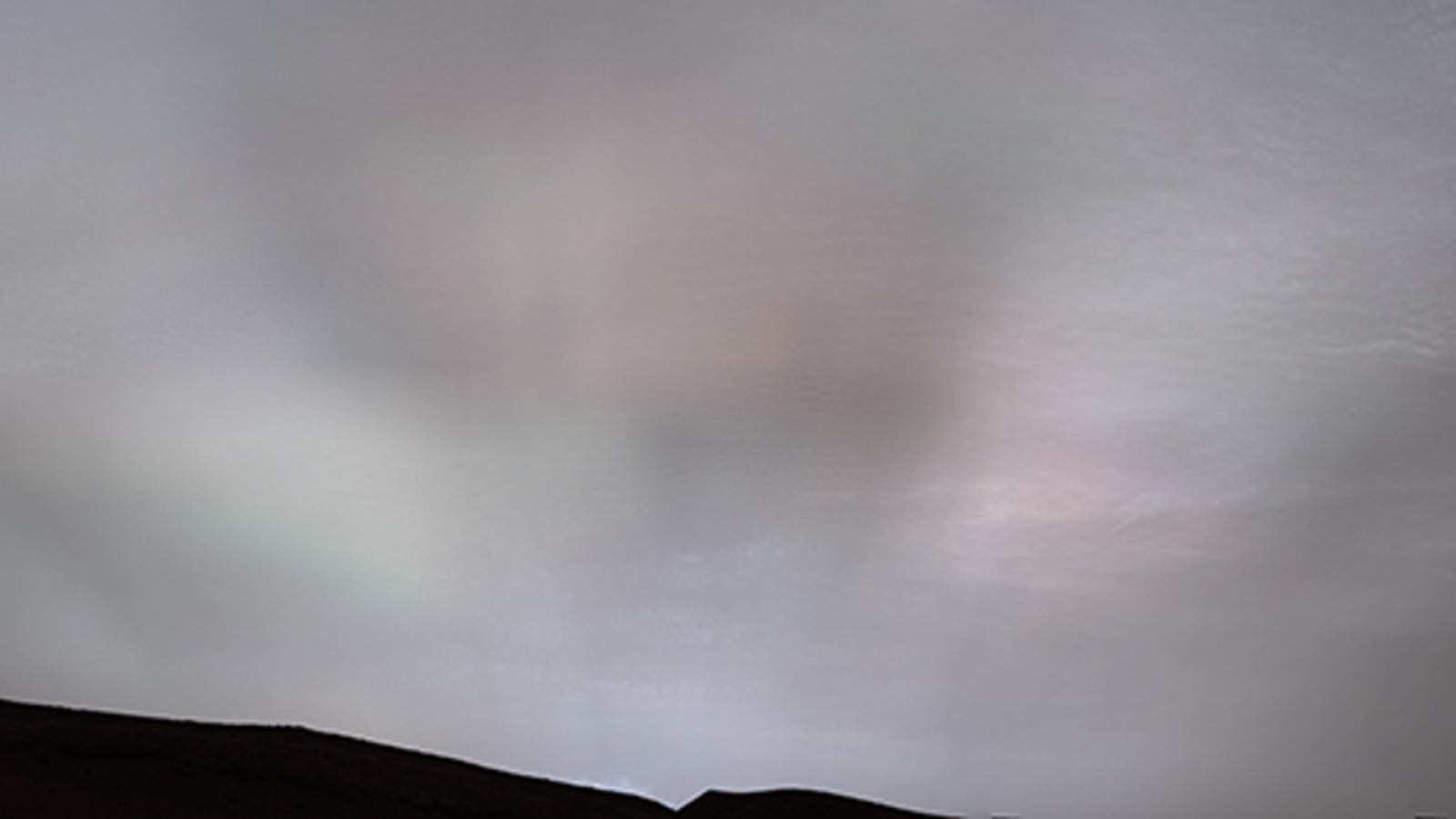
NASA’s Curiosity rover recently snapped a stunning shot of dazzling “sun rays” shining through unusually high clouds during a Martian sunset. It is the first time sun rays have been clearly visible on the Red Planet.
Curiosity captured the new image on Feb. 2 as part of a series of twilight cloud surveys that have been ongoing since January and will end in mid March. The photo, which is a panorama comprising 28 individual imageswas shared by the Curiosity rover’s Twitter page on March 6.
“It was the first time sun rays have been so clearly viewed on Mars,” team members from NASA’s Jet Propulsion Laboratory (JPL) wrote in a statement (opens in new tab).
Sun rays, also known as crepuscular rays, occur when sunlight shines through gaps in the clouds during sunsets or sunrises when the sun is below the horizon. The rays are most visible on Earth in hazy conditions, when the light scatters off smoke, dust and other particles in the atmosphere, according to the U.K. Met Office (opens in new tab). Although the dazzling beams appear to converge at a point beyond the cloud, they actually run near-parallel to one another.

Martian clouds, which are mostly made from ice crystals of both water and carbon dioxide, normally hover no more than 37 miles (60 kilometers) above the ground. But the clouds in the new image are estimated to be much higher, which is likely why this unusual phenomenon became visible to the rover, JPL representatives wrote.
Related: Detecting life on Mars may be ‘impossible’ with current NASA rovers, new study warns
On Earth, sun rays normally appear red or yellow because the sunlight passes through around 40 times more air than it does when shining directly from above at midday, according to the Met Office. This means more light gets scattered by the air, known as Rayleigh scattering. As the light scatters, longer wavelengths of light that produce colors such as blue and green get scattered the most, so the light that reaches our eyes appears predominantly yellow and red.
On Mars, the sun rays have a much more white color because the Red Planet has a very thin atmosphere, which means sunlight doesn’t scatter as much as on Earth. This is why Martian sunsets often have a blue-ish glow.

On Jan. 27, Curiosity also snapped a picture of a “feather-shaped iridescent cloud” during another one of its twilight cloud surveys. This was similar to a series of rainbow-colored clouds that recently shone in the skies above the Arctic. The rainbow clouds, known as polar stratospheric clouds, only form on Earth during unusually cold conditions when clouds form at higher altitudes than normal, which enables them to scatter strong sunlight as the surrounding skies darken. This suggests that Mars’ clouds remained unusually high in the time period between the two photos being taken.
Spotting strangely colored clouds and sunsets helps planetary scientists learn exactly what the clouds are made of and understand more about Mars’ limited atmosphere.
“By looking at color transitions, we’re seeing particle size changing across the cloud,” Mark Lemmon (opens in new tab)an atmospheric scientist at Space Science Institute who has worked on the Curiosity rover, said in the statement. “That tells us about the way the cloud is evolving and how its particles are changing size over time.”
Note: This article have been indexed to our site. We do not claim legitimacy, ownership or copyright of any of the content above. To see the article at original source Click Here












